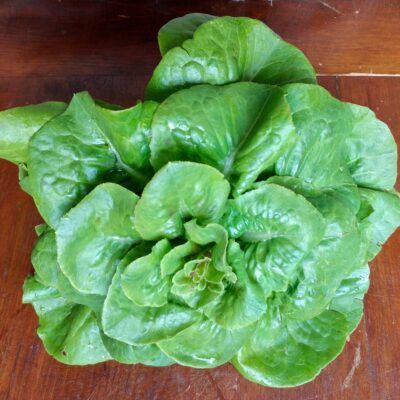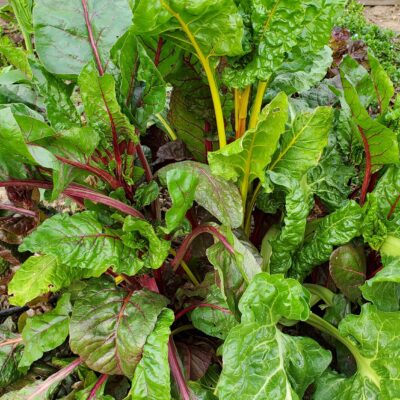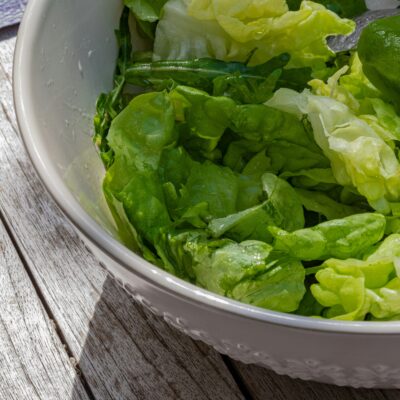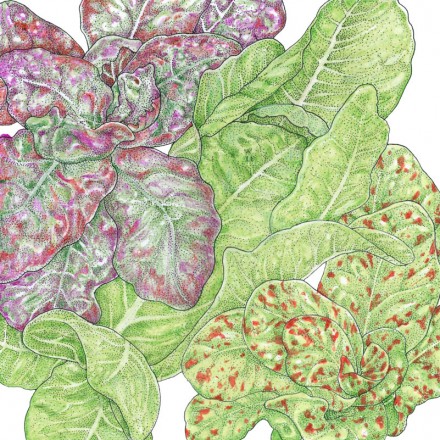Disclaimer: This article is for educational purposes only. The information and herbs therein have not been evaluated by the Food and Drug Administration and this work is NOT intended to diagnose, treat, cure, or prevent any diseases.
Sorrel, known scientifically as Rumex acetosa, is a vibrant herbaceous plant that belongs to the Polygonaceae family, which is also home to more commonly known plants like buckwheat and rhubarb. Garden sorrel has bright green, arrow-shaped leaves and small, greenish flowers that are clustered together in panicles. The flowers of garden sorrel are not showy or colorful but rather inconspicuous in appearance. While it may not look like much externally, sorrel is prized for its distinctive lemony flavor.
Where Does Sorrel Come From?
Sorrel is believed to have originated in Europe and Asia and it has a long history of cultivation in these regions for both culinary and medicinal purposes. In fact, its lemon-like flavor was used in Europe before citrus fruit became more readily available. Now it is widely found in various regions across the globe, including North America, growing as a perennial in USDA Zones 4-8.
We’ll be focusing on common or garden sorrel, Rumex acetosa, in this article. However, there are other types of plants commonly known by the name sorrel. French sorrel (Rumex scutatus), for example, is a related plant with smaller leaves that are more rounded compared to garden sorrel. It has a milder flavor than garden sorrel and is often used in culinary dishes to add a subtle tartness without being overpowering.
We also carry Sheep Sorrel (Rumex acetosella) live root crowns in our store too – this is what is pictured in the main article image, as well as the image below this paragraph. It’s called sheep sorrel because the little lobes look like ears and the main lobe looks like the face/nose of a sheep! You can learn more about this plant here.

Sheep Sorrel – Rumex acetosella
What Does Sorrel Taste Like & How is It Used?
Like mentioned earlier, sorrel offers a tart, citrus-like flavor that sets it apart from other leafy greens. Its refreshing taste adds brightness to salads, soups, sauces, and beverages. The sharpness of sorrel leaves complements rich or fatty ingredients, creating a delightful balance in dishes. It is especially good when paired with fish!
Nutritionally dense, sorrel isn’t just tasty; it is also a powerhouse of essential vitamins and minerals. Being high in vitamin C, it boosts immunity and collagen production. It also contains antioxidants, fiber, potassium, vitamin A, and magnesium.
It also has various medicinal uses. Sorrel is traditionally used to treat digestive issues such as indigestion and heartburn. Common sorrel is also known for its diuretic properties, helping to increase urine flow and potentially reducing water retention. Additionally, it contains antioxidants and vitamin C, which can boost the immune system. Some studies suggest that common sorrel may have anti-inflammatory and antimicrobial properties as well. Sheep sorrel in particular is used in Essiac tea, a natural remedy for cancer.
While sorrel is generally safe for consumption in moderation, individuals with kidney issues may need to be cautious due to its oxalic acid content that may contribute to kidney stone formation.

Garden Sorrel – Rumex acetosa
How to Grow Sorrel in the Garden
Sorrel can be planted by sowing seeds 1/4″ deep in well-draining soil in early spring or fall. (If you’re interested in growing sorrel from seed, you can find heirloom seeds here.) The seeds germinate quickly, within 5-10 days of planting, and take about 40-60 days to reach harvestable growth. This plant doesn’t take long to start growing in the garden and can be harvested the first year.
Sorrel will grow in many different types of conditions, though garden sorrel does prefer rich soil with good drainage at a pH level between 5.5 to 6.8. Sheep sorrel grows in many different conditions as well, but it is commonly found in acidic, dryer soil conditions when growing in the wild. Providing partial shade to full sun exposure ensures optimal growth. Sorrel needs a minimum of 6 hours of sunlight daily. Garden sorrel also needs regular water.
Every spring, sorrel is one of the first leafy greens to sprout again after the winter, making it a common springtime delicacy. Cutting the seed stalks during the summer can also help prolong your harvests.

How to Harvest & Use Sorrel
Sorrel comes ready to harvest about 6-8 weeks after planting and the leaves are better picked before flowering, to yield a tender texture and sweeter flavor. Trimming the outer leaves at the base of the stem encourages continuous growth, while leaving inner leaves intact supports ongoing plant health. The leaves tend to get tougher as the temperatures rise, so it is best used as a cool weather green.
Once picked, you can enjoy sorrel raw in salads, incorporated into sauces, or wilted into soups for a tangy addition to culinary creations. You can also experiment with creative recipes like sorrel pesto, sorrel soup, or sorrel-infused vinegar to showcase the herb’s unique flavor profile. Sorrel’s versatility extends to omelets, risottos, fish dishes, and more, adding a zesty touch to elevate your culinary creations.
Concluding Thoughts on Growing Sorrel
In conclusion, Rumex acetosa, or sorrel, is a versatile herb that delights both the palate and the body with its tangy flavor and nutritional benefits. It might not be a commonly known herb, but once you try it, I think you’ll realize what you’ve been missing.














